How do you gauge an audience? By this I mean, how do you determine what people will and won’t go to see? I have tussled with this question for a while now—but more so recently because of being involved with the programming for both the Thursday Horror Picture Show and the Asheville Film Society. I have listened to advice. I have taken advice. I have ignored advice. I have gone with my instincts and I’ve gone against my instincts. The results have led me to conclude there’s no earthly way of making an accurate determination.
This used to just be an abstract consideration. I have a natural interest in seeing films I like be well attended. I think we all do. Going to a movie that genuinely matters to you and finding yourself surrounded by other moviegoers is exhilirating. It’s also a bit unsettling when you stop to wonder how many of them have never seen the movie? What’s the reaction going to be? If it’s positive, it feels like a vicarious victory—or at the very least a sense that your taste has been validated. And don’t kid yourself, we all like to be validated on some level.
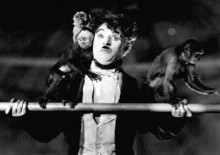
Long ago, however, I realized that just because I’m interested in a thing it does not follow that the rest of the world is equally enthused. This was driven home forcefully in 1974 when the University of South Florida held its Chaplin retrospective—running one Chaplin film a week for three days until they’d shown everything from Shoulder Arms (1918) through A King in New York (1957). When two of my friends and I read about this, nothing would do but that we drive to Tampa the morning the tickets for the whole season went on sale. The prospect of being too late and missing out on this was too terrible to contemplate. The upshot? We had tickets numbered 001, 002 and 003. One of our group just came across his a few months ago. The series, by the way, fared well—most nights we were there were near capacity—but I think we were a little too sure that our tastes mirrored those of a lot of other people.

I think it’s human nature to make the assumption that what you’re excited about is going to excite other people. I spent ten years at a theater dealing with calls where people would be in a panic to find out whether the most improbable of titles—cheap horror movies, lame spoof comedies, even movies starring the Olsen twins—had any tickets left. In many cases, we not only had tickets left, but the callers were likely to have the theaters to themselves. Neither Gigli (2003), nor Glitter (2001) played at the theater where I worked, but I bet somewhere someone called about both of them just to be sure they’d be able to get in.
Studios and theater chains aren’t necessarily any better judges of things. After all, somebody somewhere along the way had to say “yes” to Gigli and Glitter. And remember Warner Bros. was all set to send Danny Boyle’s Slumdog Millionaire (2008) straight to video until Fox Searchlight stepped in to say they’d release it to theaters. Before it came out, one of the producers of David Fincher’s Se7en (1995) commented that he was certain he’d never work in Hollywood again after the public got a look at the film. While I tend to agree with him as concerns what should have happened, it clearly wasn’t what did hppen.
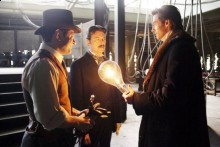
I remember when Christopher Nolan’s The Prestige (2006) and Clint Eastwood’s Flags of Our Fathers (2006) opened locally on the same weekend, word came down from corporate to be sure to put Flags in the biggest possible theater and stick The Prestige in some lesser auditorium. They were certain Flags was going to be “huge.” By Saturday morning new word came to switch them. Actually, we didn’t have to because we’d pretended we’d never seen that original order. I wish I could say that this was the result of some process of mystical divination on our part—but that’s only partly true. A lot of it had to do with us being more interested in The Prestige personally.
Still, this is a fairly academic interest. Though I’ll occasionally offer the view that a film should appeal to this or that kind of an audience, I have never attempted to review movies as if I thought I was some kind of “average” moviegoer. First of all, you can’t do this job and remain a so-called average moviegoer. You see too much and are too immersed in it. Also, no one can really tell you what you will like. The best a reviewer can do is tell you whether he or she likes a film and why or why not.
I suppose my first brush with actually trying to program with an audience in mind came with the 2005 Asheville Film Festival when I programmed the Ken Russell retrospective that went with it. But that—and the subsequent years when I performed similar functions with Jennifer Tilly, Tess Harper and Brad Dourif—had the advantage of having the input of the subjects. And really 2005 was the only year where we were allowed something like a serious retrospective.
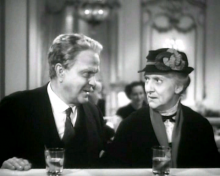
After that it came down to making suggestions to Carlos Steward for his World Cinema showings. In some ways, that turned out to be an eye-opening occurence. Films that I thought should have drawn well—like Fritz Lang’s The Testament of Dr. Mabuse (1932)—brought in only so-so audiences. Other movies that it never occurred to me would have much of an audience—Rene Clair’s A Nous la Liberte (1931) comes to mind—did surprisingly well. The real kicker came not that long ago when no film had been selected and I just pulled Leo McCarey’s Make Way for Tomorrow (1937) off the shelf and said, “This is what you’re running.” So here they were with an old movie—a heart-breakingly sad one—almost no one ever heard of, starring two largely forgotten character actors, Victor Moore and Beulah Bondi. I “knew” it didn’t stand a hope in hell of drawing an audience. So what happened? They were packed. It was one of their largest turnouts. I still have no idea why.
With the advent of the Thursday Horror Picture Show and the Asheville Film Society the dynamic shifted dramatically. Suddenly the success or failure of both—assuming that either idea was viable to begin with—rested on the programming decisions made by Justin Souther and myself. In the immortal words of Ken Russell discussing Christian Bale’s performance as Batman, “Ick!” I mean, this is exactly the sort of thing I’ve wanted to do for years, and the idea that it wouldn’t work or that I would be instrumental in killing it due to making bad choices was daunting—especially, since I’d started to realize that audiences (or proposed audiences) are a very unpredictable factor.
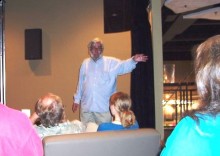
It’s not entirely about the movie selections either. There’s the whole business of intent vs. inertia. This we have all experienced. It’s the “I’d like to go but” syndrome. You know, “I’d like to go, but I’m awfully comfortable.” “I’d like to go, but I’d have to put on better clothes.” This can go on forever with minor variations. And there’s this mystifying notion that the Carolina Asheville is so far away that on a clear day you can see the Canadian border from the parking lot. I hate to break it to people, but I live east of town and by hopping on I-40 and picking up Hendersonville Road at exit 50A, I can actually get to the Carolina faster than I can get to any other theater in town. Anyway, it’s not as if Asheville was some sprawling metropolis. This is really a pretty compact area.
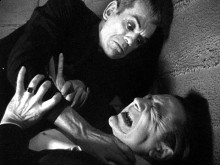
Those, however, are things over which Justin and I have no control. The movie selections are another matter. That—at least for round one—was entirely up to us—so far as the first set of horror movies were concerned. The idea of course was to come up with a reasonably broad selection of titles from different eras that would have the widest possible appeal, but keeping it fresh by not limiting ourselves to the best-lnown titles. To date we’ve run nine films—Re-Animator (1985), Angel Heart (1987), The Black Cat (1934), The Raven (1935), The Exorcist III (1990), Gothic (1986), Frankenstein (1931), The Lair of the White Worm (1988) and The Gorgon (1964). When we run The Sentinel (1977) this coming Thursday, we’ll have run through our first set. The next batch reflects viewer feedback.
How have we done? Surprisingly well. The innaugural showing of Re-Animator was packed. We ended up with some of the audience sitting in the floor—a situation we’ve since remedied by purloining sofas from the theater’s Sofa Cinema auditoriums. Our lowest turnout was for the double feature of The Black Cat and The Raven, but it was still a solid turnout and we’d expected a drop in attendance due to the age of the film. What was gratifying was that the audience responded much in the way that films’ makers had intended. The laughs were where they were supposed to be—with only a hint of modern superiority to any of it.
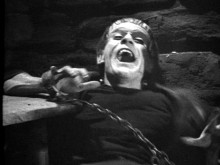
While we experienced a drop with those films, we ended up with the biggest crowd we’ve ever had for anything with Frankenstein—an even older movie. Now, why should this be? Is the Frankenstein brand name that powerful? It’s interesting to speculate whether another film with that magic name in the title would do so well. Would a similar crowd show up if we programmed a real lox like Frankenstein 1970 (1958)? (Don’t worry. I have no plans of doing any such thing, no matter how much the idea intrigues me on an experimental basis.)
We also had no clue what to expect with The Gorgon. How many people even know what a Hammer horror picture is these days? Yes, they’re newer than the old Universal product, but they haven’t been able to retain the same level of public awareness—possibly because they were distributed by a variety of studios, making a big push for definitive collections impossible. (I would personally argue that the Hammers also tend to seem more quaint than films made 30 years earlier by Universal, but that’s another argument for another time.)
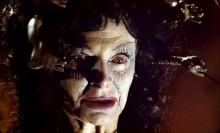
As it turned out, The Gorgon nearly had as many people as we’d had for Re-Animator. And it was an interesting mix of viewers who were familiar with Hammer and those who’d never heard of them. Very few had actually seen this particular title. The surprising thing is that it had probably the best vibe of all the showings—just the right amount of respect and laughter at the parts that time has not been kind to. (I’m sorry, but my respect will not stifle bursting out laughing at Christopher Lee slapping Richard Pasco—nor do I think it should.)
To say that I’m pleased with the way this has gone is an understatement. And while I’d like for Justin and I to get a little credit for the choice of titles, I place a great deal of value on the contribution of the audiences. It’s their ability to see beyond the films they know and try the unfamiliar that has made these first weeks a success—a success that means that we can carry on with a new slate of films after this week’s showing of The Sentinel. And that next set includes two titles—Brian DePalma’s Phantom of the Paradise (1974) and Robert Fuest’s The Abominable Dr. Phibes (1971)—that were suggested by audience members.
The Asheville Film Society screenings have been a little different in that our first screening—the Coen Brothers’ Blood Simple (1984)—was held before anything else had been set in stone. The turnout was about on a par with the one for Frankenstein, and as a result a certain amount of early suggestions got into the mix. Audience input is directly responsible for the fact that the month of June climaxes with Francis Ford Coppola’s Tetro (2009). We shall see how that works out in terms of attendance.
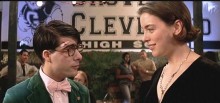
The AFS programming is trickier than that of the horror series for the simple reason that it isn’t immediately narrowed by genre. The idea is to entertain, but also to expand the audience’s familiarity with the simply amazing array of great movies that are out there. That’s a daunting task, but it’s also an agreeable one. The lack of the genre hook, however, makes the audience much tougher to read. Blood Simple was a brilliant opening for the AFS. We felt sure—based on the way Asheville has responded to his other films—that Wes Anderson’s Rushmore (1998) would be equally successful, but it wasn’t. It was successful, yes, but not in the running-out-of-seats range by any stretch.
We both knew the next offering—The Times of Harvey Milk (1984)—wasn’t going to be huge. Why? Because it’s a documentary—a great one and an Oscar-winning one, but a documentary all the same. People like to talk about documentaries and what big fans of them they are, but when it comes right down to it, the draw isn’t there. (The buzz had it that Exit Through the Gift Shop was the movie to see this summer if you wanted to be hip. It managed to sustain only one week as a solo feature at the Fine Arts, being handily beaten by a foreign language film, The Girl with the Dragon Tattoo, that had been playing for three weeks already.) Still, Harvey Milk had a respectable turn-out—and one that drew people who had not been to one of the screenings before, so I’m not in the least sorry we chose it.
I strongly suspect that this week’s film—Woody Allen’s Manhattan (1979)—will do pretty well. While a few of Allen’s films have tanked locally, Asheville has tended to be supportive of his work. Even lesser offerings like The Curse of the Jade Scorpion (2001) have fared surprisingly well, while his Whatever Works (2009) was one of the bigger art house hits of last year on the local front.
With next week’s film—Howard Hawks’ Twentieth Century (1934)—we’re going out on a different kind of limb, because the film is old and the title tells little or nothing about it. The title refers to the train on which a good deal of the action takes place. When the film was new everyone knew that the Twentieth Century Limited was the train that connected Chicago and New York City. Now? Who knows?
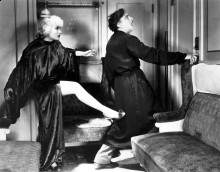
Over the years I’ve seen the film with at least four different audiences at different periods. I’ve never seen it fail. I’ve never even seen it get close to failing, but will it draw? Will the people who took to Blood Simple or Rushmore or Harvey Milk give this one a chance? We’re hoping they will. We both know this is a fast-paced and very funny movie that shows its legendary stars, John Barrymore and Carole Lombard, at the peak of their considerable power. But you won’t know that unless you see for yourself. The question is how many people will take that step of seeing for themselves.
Actually, I’m very hopeful about Twentieth Century faring well. (Truth to tell, I have no doubt about it faring well with anyone who does come.) I have been agreeably surprised by the expressions of open-mindedness with the audiences so far. And I’ve been more than surprised by the number of people who have voiced a desire to see some silent movies thrown into the mix. In a world where we still here that people won’t sit still for a black and white movie (no matter how often this is disproved), it’s pleasantly astonishing to find people actually wanting to see movies with no sound! One woman even left last week saying she had just two words for me—“Lillian Gish.”
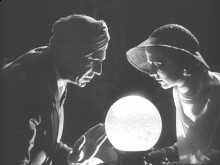
So we’re trying to learn our audience and let them to quite a large extent shape us. Does that mean we are able to gauge them? Probably not. I’m tempted to give long and serious consideration to the purchase of a nice crystall ball and a zooty turban to try to get a better handle on what viewers want—and what they’ll actually stir themselves to leave their houses to see. It might help. It can’t hurt. (And I look very rakish in a turban, I can tell you.) But in the end, I think the audience will remain a marvelously unpredictable beast—and though that makes my job harder, I actually kind of like that fact.
Special thanks to Jeffrey DeCristofaro for the pictures from the Carolina Asheville.




I don’t.
I don’t.
Why does it matter to you?
Ken, If you could find the answer to your question please let me know because with that sort of knowledge I could rule the world.
I’d attend the sort of screenings you do if someone were willing to do it locally. There used to be a theater in Hollywood called the Vista in the 70s that showed older classics and strange movies. My wife and I saw lots of stuff that wasn’t available since this was the pre-video tape era. I was introduced to wonderful things that I had no idea existed since TV seldom showed real classics. Movies from “The Thin Man” to Rutherford “Marple” to “Seven Samurai” to “Importance of Being Earnest” to “Freaks” and, yes, “Frankenstein” which is an entirely different experience than seeing it on TV. We went to the Vista far more than regular theaters. Naturally LA has a massively huge movie-going public so the theater was usually quite full.
I think that word of mouth is key to the success of small operations that can’t afford any promotion. Maybe you could print up some small posters and place them around. There are probably many people who would like to see the sorts of movies you are showing. They just don’t know about it.
Ken, If you could find the answer to your question please let me know because with that sort of knowledge I could rule the world
The trick is that I doubt any kind of answer is possible on a broad basis. I’m only looking for a hypothetical answer in a relatively confined space.
I was introduced to wonderful things that I had no idea existed since TV seldom showed real classics
That, of course, is no longer the issue it once was, especially when combined with home video. But this comes with a downside because the enormity of what’s available is overwhelming and can become paralyzing. Not knowing what to pick often seems to result in picking nothing at all — or falling back on things you already know. I think one of the main functions of a film society is to help make some kind of sense out of the array of what’s available, to function as a kind of tour guide, if you will.
and, yes, “Frankenstein” which is an entirely different experience than seeing it on TV
More and more, I find that to be true of just about everything. And it’s not just size. (Bear in mind that our venue is not huge, though we do have good projection and excellent sound.) It’s also that whole communal thing. That should never be sold short.
There are probably many people who would like to see the sorts of movies you are showing. They just don’t know about it.
I’m certain of it. And note that I’m not complaining. I’m very happy with the Thursday Horror Picture Show results and have been more encouraged than not by the film society response.
The prospect of being too late and missing out on this was too terrible to contemplate. The upshot? We had tickets numbered 001, 002 and 003.
But there COULD have been a run on the tickets, which I think completely justifies our actions. Plus, the series, and the fine dining which accompanied the outings, were well worth the effort.
And I’ve been more than surprised by the number of people who have voiced a desire to see some silent movies thrown into the mix.
If you decide to screen a Chaplin film, I’d recommend THE KID.
But there COULD have been a run on the tickets, which I think completely justifies our actions.
Oh, absolutely.
Plus, the series, and the fine dining which accompanied the outings, were well worth the effort
Ah, the Quarter Pounder with cheese. Clearly, the gourmet mood was upon us.
If you decide to screen a Chaplin film, I’d recommend THE KID.
You always do.
It doesn’t matter to me when i go to see a movie i don’t worry what audience is going to be there i go to watch the movie.
” I have a natural interest in seeing films I like be well attended. I think we all do.”
I agree most people do as well. I tend to share the opinion of ‘Me’ in that I don’t really care if the house is full or there’s only a handful there. In fact, a small audience will probably mean less irritating talking, cell phone use etc. which is just fine. I often get really absorbed in a movie and will gladly trade the ‘communal’ element for minimal distractions. But then again, I’m something of a loner anyway.
I tend to share the opinion of ‘Me’ in that I don’t really care if the house is full or there’s only a handful there.
Which is fine, but “Me” started off by saying that he doesn’t like the fact that audiences are unpredictable in their tastes. I asked why it bothered him, etc.
Personally, I like a good audience — but bear in mind I said a good audience. I fully realize there are bad audiences as well. But a good audience — put it this way, I don’t believe I ever enjoyed The Gorgon as much as I did watching it with that audience.
In any case, liking or disliking the presence of an audience is a completely separate issue from trying to discern what people will and won’t go see.
“…liking or disliking the presence of an audience is a completely separate issue from trying to discern what people will and won’t go see.”
I’m aware of that. A question that could probably never be answered definitively, although it’s probable that SOME films (i.e. Twilight, et al) can reasonably be expected to draw a particular type of crowd. In general though, a crystal ball or maybe Tanna leaves will yield as good an answer as anything.
maybe Tanna leaves
Hadn’t thought of those. You don’t know where I can get any, do you?
“Hadn’t thought of those. You don’t know where I can get any, do you?”
I happen to have my own private stash; as you know, they’re rare and highly coveted.
I happen to have my own private stash; as you know, they’re rare and highly coveted
So I’ve heard (and I suspect my chances of obtaining same are limited).
Personally, I think that your little picture of Mariah Carey is far more frightening than the Gorgon. Maybe you could show “Glitter” as part of your horror series. There’s safety in numbers and a large enough crowd might encourage more timid souls to face the Hideous Diva Demon. You could even issue little bravery medals.
Maybe you could show “Glitter” as part of your horror series.
The inherent flaw in this is I’d be sitting through it a second time and that might be fatal.
A comment for you on the AFS screenings: my wife and I attended the opening night with “Blood Simple” and bought AFS memberships, but we haven’t been back since. Not because we weren’t interested in the movies, but due to having to get up shortly after 6:00 for work. Glad you added a Q&A after, but we’d probably be asleep by then.
Although unable to come to the Friday AFS screening of “The Square,” your review motivated me to see it Sunday. People’s schedules and social commitments may have as much to do with the “audience” as anything else.
And, in closing, I actually pick movie times where there might be smaller audiences – less chance that someone will be texting, talking or coughing near me.
I usually go to midnight shows if possible just for the simple fact that most of the time there’s only 2 or 3 people in the theater.
Ken, I don’t live in the Asheville area but I’ve been through several times. I’ll tell you what I would travel roughly 6 hours for though:
Wheeler & Woolsey fest.
In fact here’s a fascinating idea. Do a Pepsi challenge of sorts with some top tier W & W and some better known Laurel & Hardy features. I would be interested in seeing if a modern audience preferred Sons of the Desert or Hips, Hips, Hooray.
A comment for you on the AFS screenings: my wife and I attended the opening night with “Blood Simple” and bought AFS memberships, but we haven’t been back since. Not because we weren’t interested in the movies, but due to having to get up shortly after 6:00 for work.
I’m glad to get this kind of feedback. It’s the sort of thing that helps us get a handle on when we’re doing something wrong vs. when it’s purely a matter of logistics. The former we can address, the latter is largely out of our control. The sad fact is that there’s no ideal time or night for everyone. If you’ve any suggestions, I’d be glad to hear them.
In fact here’s a fascinating idea. Do a Pepsi challenge of sorts with some top tier W & W and some better known Laurel & Hardy features. I would be interested in seeing if a modern audience preferred Sons of the Desert or Hips, Hips, Hooray
A Duck Soup and Diplomaniacs test might be more apt. One problem — apart from the obvious one of getting people to come see Wheeler and Woolsey — lies in the availability of commercially produced DVDs of the W&W titles. Have any of their films made it to Warner Archive status? Ironically, a great deal of their work was put out on laserdisc.